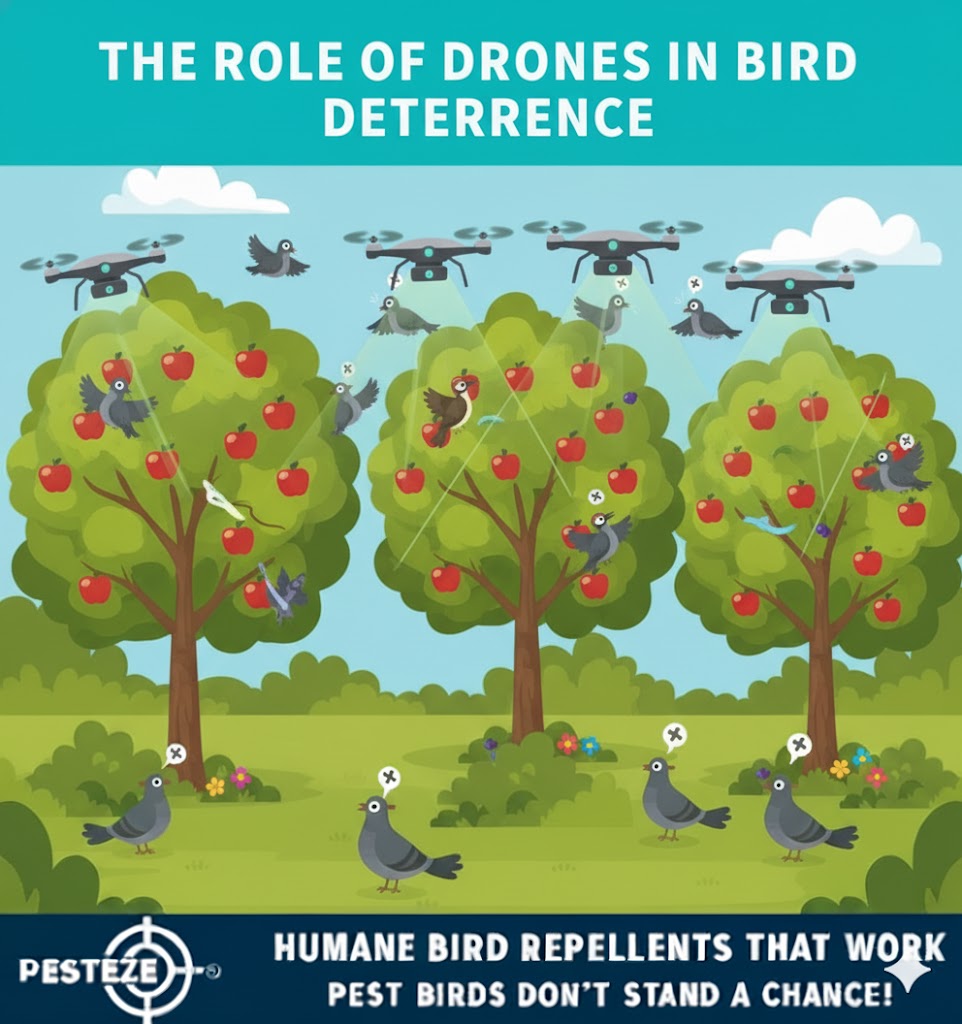THE ROLE OF DRONES IN BIRD DETERRENCE

THE ROLE OF DRONES IN BIRD DETERRENCE
SUMMARY
Drones can be used as a humane and effective bird deterrent by creating movement and sound that discourages birds from congregating in unwanted areas. They are ideal for large open spaces, agricultural fields, airports, and industrial sites.
FEATURES
Humane Solutions: Deters birds without causing harm.
Wide Coverage: Effective for large or hard-to-reach areas.
Flexible Use: Can be programmed for automated patrols or manual operation.
Cost-Effective: Reduces property damage and crop loss.
Eco-Friendly: Avoids chemicals, poisons, or physical traps.
Customizable Patterns: Flight paths and altitudes can be adjusted for optimal results.
Visual and Auditory Deterrent: Movement, shadows, and noise discourage birds.
Supports Other Methods: Works in combination with nets, reflective devices, and sound deterrents.
GUIDE DESCRIPTION
Birds can cause significant problems in open fields, airports, orchards, and industrial sites, where traditional deterrents may be less effective. Drones provide a versatile, humane solution by using movement, noise, and occasional predator mimicry to keep birds away.
How Drones Work:
The presence of a drone flying overhead creates an unpredictable stimulus for birds. Birds perceive the movement and sound as a potential threat, prompting them to avoid the area. Some drones are equipped with predator-like designs or emit sounds that enhance their deterrent effect.
Applications:
-
Agriculture: Protect crops and orchards from birds that feed on fruits, grains, or seeds.
-
Airports: Reduce bird strikes by keeping birds away from runways and surrounding areas.
-
Industrial Sites: Prevent birds from nesting on structures like rooftops, silos, or cooling towers.
-
Large Open Spaces: Maintain bird-free zones in parks, fields, or event areas.
Operational Tips:
-
Schedule drone flights at varying times to prevent birds from habituating.
-
Keep flights short and intermittent to maximize deterrence without stressing wildlife.
-
Combine with other deterrents, such as visual markers or netting, for more effective long-term control.
Safety and Regulations:
Operators should follow local drone regulations and avoid flying too close to humans, protected wildlife, or sensitive airspace. Proper training ensures that drones are used effectively and responsibly.
By integrating drones into bird control strategies, property managers and homeowners can reduce damage, protect crops, and maintain bird-free zones safely and humanely. Regular monitoring and careful operation enhance the long-term effectiveness of this modern, high-tech approach.
- Smrithi Art


Comments 0